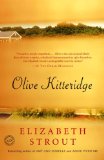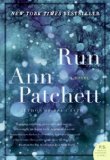Summary | Excerpt | Reading Guide | Reviews | Beyond the book | Read-Alikes | Genres & Themes | Author Bio

A Novel
by Margot LiveseyMargot Livesey skillfully reveals how luck—good and bad—plays a vital role in our lives, and how the search for truth can prove a dangerous undertaking.
It seems like mutual good luck for Abigail Taylor and Dara MacLeod when they meet at St. Andrews University and, despite their differences, become fast friends. Years later they remain an unlikely pair. Abigail, an actress who confidently uses her charms both on- and offstage, believes herself immune to love. Dara, a counselor, is convinced that everyone is inescapably marked by childhood; she throws herself into romantic relationships with frightening intensity. Yet now each seems to have found "true love"—another stroke of luck?—Abigail with her academic boyfriend, Sean, and Dara with a tall, dark violinist named Edward, who literally falls at her feet. But soon after Dara moves into Abigail's downstairs apartment, trouble threatens both relationships, and their friendship.
For Abigail it comes in the form of an anonymous letter to Sean claiming that she's been unfaithful; for Dara, a reconciliation with her distant father, Cameron, who left the family when Dara was ten, reawakens complicated feelings. Through four ingeniously interlocking narratives—Sean's, Cameron's, Dara's, and Abigail's—we gradually understand how these characters' lives are shaped by both chance and determination. Whatever the source, there is no mistaking the tragedy that strikes the house on Fortune Street.
"Everyone," claims Abigail, "has a book or a writer who's the key to their life." As this statement reverberates through each of the narratives, Margot Livesey skillfully reveals how luck—good and bad—plays a vital role in our lives, and how the search for truth can prove a dangerous undertaking. Written with her characteristic elegance and wit, The House on Fortune Street offers a surprisingly provocative detective story of the heart.
Livesey devotes one section to each character, and each section pays homage to a different classic English novel. One by one, her characters reveal their lives, and the reader's view changes as the author peels back the story. Livesey's novel is an absorbing study of people who, by luck, choice, or fate, change their destiny...continued
Full Review
 (334 words)
(334 words)
(Reviewed by Lesa Holstine).
Each of Margot Livesey's four key characters relates to a specific author: John Keats, Lewis Carroll, Charles Dickens and Virginia Woolf.
Lewis Carroll (Charles Dodgson) and Charles Dickens were both prominent Victorians, the term used to describe people, things and events during the reign of Queen Victoria (1837-1901). A great source of information on the Victorian period can be found at victorianweb.org. Created and managed by George Landow, Professor of English and Art History at Brown University, the website has more than 60,000 documents covering the literature, history and culture of the age of Victoria. It describes the social aspects of the period, the people, science and technology, and religion. It was a period of great change ...

If you liked The House on Fortune Street, try these:

by Elizabeth Strout
Published 2008
Winner of the Pulitzer Prize, Olive Kitteridge offers profound insights into the human condition – its conflicts, its tragedies and joys, and the endurance it requires.

by Ann Patchett
Published 2008
Set over a period of twenty-four hours, Run shows us how worlds of privilege and poverty can coexist only blocks apart from each other, and how family can include people you've never even met.